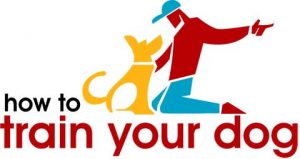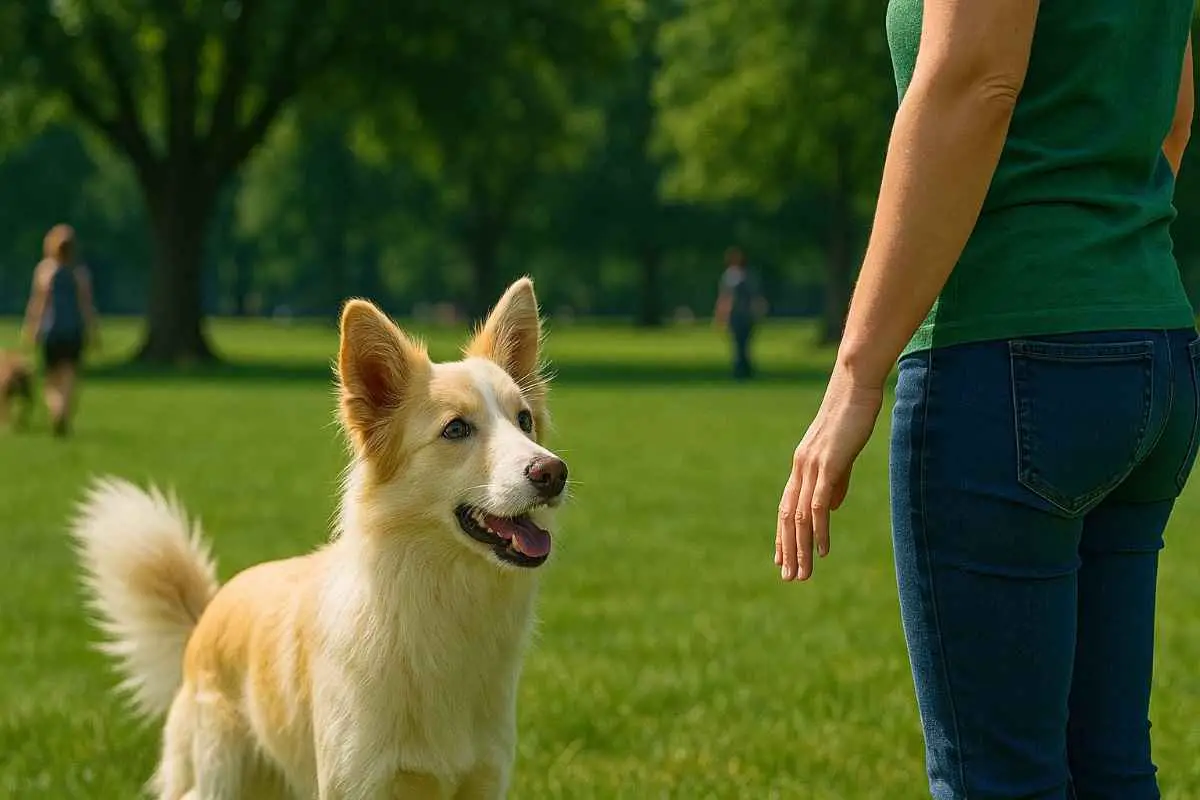Taking your dog to the park is one of the best ways to bond, exercise, and socialize. But many owners notice something frustrating: at home their dog sits, stays, or comes perfectly — yet at the park, it feels like those commands evaporate into thin air.
Suddenly, “come” means “run the other way,” and “sit” means “chase the squirrel.”
If this sounds familiar, you’re not alone. Dogs forgetting commands at the park is one of the most common complaints trainers hear. The good news? Your dog isn’t being stubborn or defiant — they’re just overwhelmed by the environment. Once you understand why this happens and how to address it, you’ll see your dog’s obedience improve dramatically, even in the busiest park.
Let’s break it down step by step.
Why Dogs Forget Commands at the Park
1. Distractions Overload Their Brain
Parks are a sensory explosion. Other dogs, people, balls flying, squirrels darting, kids running, new smells on every tree — all of these compete for your dog’s attention. At home, your voice is the main sound. At the park, your voice is one of a hundred things.
To your dog, it’s not that they forgot the command — it’s that the command is drowned out by everything else. Dogs don’t generalize well, so “sit” in the quiet kitchen doesn’t automatically transfer to “sit” while a Labrador sprints past.
2. They Haven’t Learned to Generalize
Humans are good at applying one lesson in many situations. Dogs, however, need to be taught that a command applies everywhere, not just at home. A dog might “sit” perfectly in the living room, but outside with wind, smells, and activity, the command feels completely new.
If you’ve never practiced “sit” in the park before, your dog isn’t disobeying — they’re confused because it feels like a different context.
3. The Park Is More Rewarding Than You
Dogs repeat behaviors that bring the biggest reward. At the park, chasing another dog or sniffing a tree may feel like the jackpot compared to your dry biscuit. If your rewards aren’t valuable enough in that moment, your dog will naturally choose the park’s rewards over yours.
4. Lack of Proofing
“Proofing” is trainer-speak for teaching a command under different levels of distraction. Many owners stop once the dog knows the command at home. But without practicing with gradually increasing distractions — backyard, quiet street, busier street, then park — the command falls apart in the most distracting environment.
5. Too Much Freedom Too Soon
If the first time you take your dog to the park you unclip the leash and hope for the best, you’re setting them up for failure. Off-leash freedom before a command is reliable is like letting a teenager drive on the highway the first time they touch a steering wheel. The result? Chaos.
How to Fix It: Step-by-Step Training
Now that you know why it happens, here’s how to fix it. This approach works for every dog, but it takes patience and consistency. Think of it as building your dog’s attention “muscle” for the park.
Step 1: Upgrade Your Rewards
At the park, ordinary kibble won’t cut it. You need high-value rewards that compete with the environment — think small pieces of chicken, cheese, or freeze-dried liver. The reward must be worth leaving a squirrel for.
Pro tip: Keep these treats exclusive to high-distraction environments. That way, your dog associates them only with performing commands at the park.
- 100% Pure Single Ingredient Dog Treat: Organic dog food dry is made with ONLY 100% freeze dried chicken breast/beef liver dog treats/salmon dog treats...
- Nutrient-Locked Freeze-Dried High Protein: Natural dog treats are slow-frozen at -40°F to preserve 98% nutrients and flavor. Lab-tested freeze dried...
- 2cm Perfect Cube Design: This uniform cubes freeze dried dog food for small breed dogs, medium (20-50 lbs) and puppy, can promotes healthy chewing...
Last update on 2025-08-19 / Affiliate links / Images from Amazon Product Advertising API
Step 2: Start on Leash
Never begin with full off-leash freedom. Use a regular leash or a long line (20–30 feet). This gives your dog room to explore but still allows you to guide and enforce commands. A long line ensures “come” is not optional — you can gently reel them in if needed.
Step 3: Re-teach Basic Commands in the Park
Forget what your dog knows at home. At the park, start fresh. Ask for simple sits, downs, and stays right near the entrance, on leash. Keep sessions short and rewarding. Each success builds the habit: “Oh, I do know this word even here.”
Step 4: Use the “Engagement” Game
Before letting your dog run, build their focus on you:
- Say their name.
- When they make eye contact, immediately reward.
- Repeat several times before giving freedom.
This teaches your dog that paying attention to you pays off, even in exciting places.
Step 5: Practice Recall Gradually
“Come” is the hardest command in the park. Here’s how to make it reliable:
- On Long Line: Let your dog explore. Call “come!” in a happy voice. If they hesitate, give a gentle tug and reward heavily when they arrive.
- Close Distance First: Start when your dog is only 5–10 feet away, not when they’re chasing another dog 50 feet out.
- Release Again: After rewarding, let them go play again. This prevents “come” from always meaning the fun ends.
Step 6: Control the Environment
Don’t attempt training during peak chaos. Go early morning or when the park is quieter. Once your dog succeeds in calmer settings, gradually work up to busier times.
Step 7: Short Sessions, Big Wins
Keep initial park training sessions 10–15 minutes. Quit while your dog is still engaged, not when they’re burned out. A series of small wins builds lasting progress.
Step 8: Proof with Gradual Distractions
Once your dog responds near the entrance, move deeper into the park. Then add challenges:
- Practice while another dog walks by.
- Practice with a ball bouncing nearby.
- Practice recall while your dog is sniffing.
Each layer of distraction proofing cements the command.
Step 9: Stay Consistent
Dogs thrive on repetition. If you only train at the park once a month, progress will crawl. Aim for short, frequent sessions — even 5 minutes each park trip adds up.
Step 10: Don’t Rely Solely on Treats
While treats jumpstart obedience, mix in praise, play, or permission to run again as rewards. Eventually, your dog learns that listening brings multiple good outcomes, not just food.
Special Consideration
Puppies
Young dogs have short attention spans. Keep training sessions very short and fun, and don’t expect full reliability until they’re older.
Reactive Dogs
If your dog barks or lunges at other dogs, focus first on desensitization and counter-conditioning before expecting obedience in the park.
High-Energy Breeds
Some breeds need to burn off steam before training. A 5-minute play session before training may help them focus better.
Common Mistakes to Avoid
- Repeating the Command: Saying “sit sit sit sit” teaches your dog that the first four don’t matter. Say it once, then help them succeed.
- Punishing Recall: Never scold your dog when they finally come — even if they took ages. Coming must always be positive.
- Letting Them Ignore You: If you call and they don’t come, don’t just shrug. Use the long line to guide them in, reward, and try again.
- Skipping the Steps: Jumping straight to off-leash chaos before your dog is ready almost guarantees failure.
Advanced Tips for Reliable Park Obedience
- Use Play as a Reward: Some dogs prefer tug or fetch over food. Harness that drive for training.
- Teach “Look at Me”: A simple focus command can redirect your dog away from distractions quickly.
- Practice in Multiple Parks: Dogs don’t generalize well. Train in different environments to build true reliability.
- Keep Sessions Fun: If training feels like pressure, your dog will avoid it. If it feels like a game, they’ll love playing.
The Payoff
When you take the time to retrain commands at the park with patience and structure, you unlock the best of both worlds: a dog who enjoys freedom and listens reliably. That means less frustration for you, more safety for your dog, and a stronger bond built on trust.
Remember, your dog isn’t stubborn — they’re learning in one of the most distracting classrooms possible. With consistency, proofing, and high-value rewards, you’ll soon see the commands click, even with squirrels, dogs, and tennis balls flying by.
- Premium Training Rewards: Bil-Jac Dog Treats feature an original recipe with fresh chicken liver, providing a high-quality, irresistible reward for...
- Perfectly Sized Morsels: The semi-soft, moist ½" morsels are easily breakable into smaller pieces, catering to dogs of all sizes and making these...
- Low-Fat Goodness: Crafted with your pet's health in mind, these treats are low in fat, ensuring a guilt-free indulgence that doesn't compromise your...
Last update on 2025-08-19 / Affiliate links / Images from Amazon Product Advertising API
Final Thoughts
When your dog “forgets” commands at the park, it isn’t stubbornness—it’s a training gap. The park is full of distractions and excitement that overwhelm unproofed training. By gradually introducing distractions, using high-value rewards, and practicing consistently in different settings, you can help your dog generalize commands and stay reliable even in the most stimulating environments.
The key is patience. Don’t rush. Celebrate small improvements. Over time, your dog will not only remember commands at the park—he’ll enjoy listening to you more than chasing squirrels.
Because at the end of the day, training isn’t about control—it’s about building trust and communication between you and your dog.
Checkout Our Favorite Dog Products
1. BEST PUPPY TOY
We Like: Snuggle Behavior Toy with Heart Beat & Heat Pack – Ideal toy for new puppies.
2. BEST DOG TRAINING PROGRAM
We Like: Doggy Dan The Online Dog Trainer – Stop any dog problem and raise the perfect puppy with The Online Dog Trainer.
3. BEST DOG DNA TEST
We Like: Embark Dog DNA Test – Embark screens for over 250 dog breeds + tests for 170+ genetic diseases including MDR1 drug sensitivity, glaucoma, degenerative myelopathy, and dilated cardiomyopathy, some of the most common adult-onset diseases in dogs.
4. BEST DOG PUZZLE TOY
We Like: Outward Hound Interactive Puzzle Toy – Every dog loves chasing squirrels at the park. The Outward Hound Hide-a-Squirrel Puzzle Toy gives your dog the same feeling as though he was outdoors chasing live squirrels.
5. Best Calming Treats for Dogs
We Like: FurroLandia Hemp Calming Treats – These soft chews will calm your dog so it can peacefully endure stressful situations, such as long car trips, visiting unfamiliar places, or hearing Thunder. Ideal for all dog breeds & sizes.




